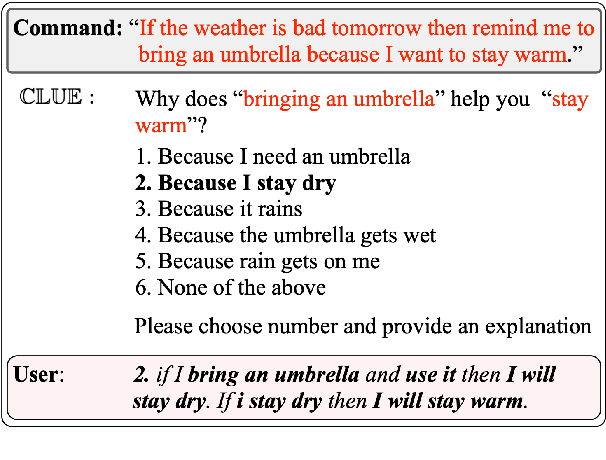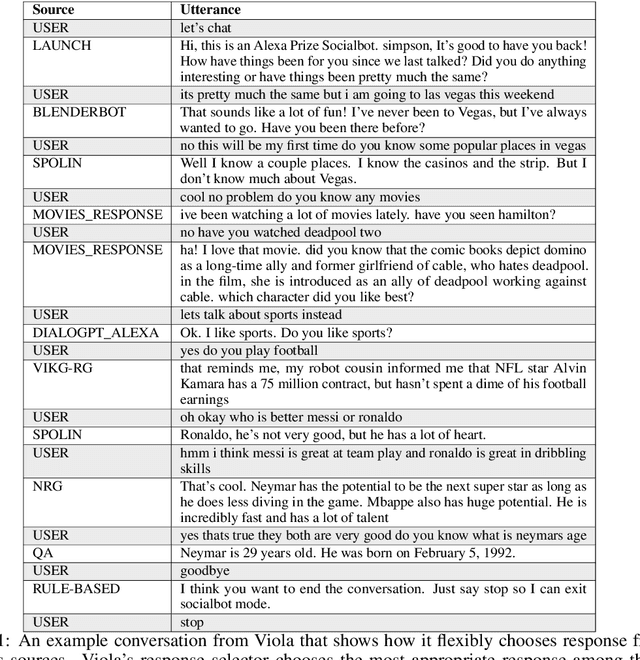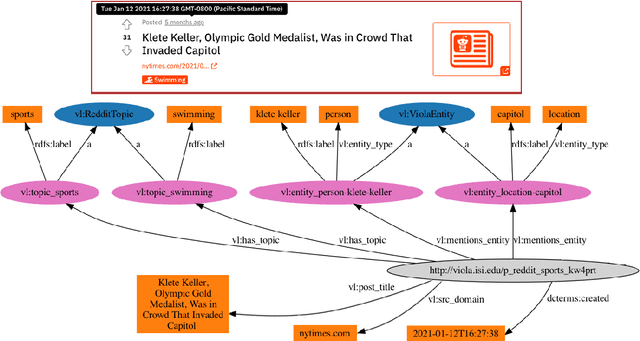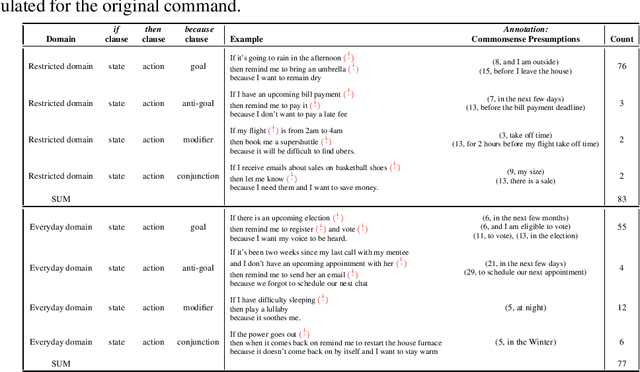Jennifer Lee
Conversational Multi-Hop Reasoning with Neural Commonsense Knowledge and Symbolic Logic Rules
Sep 17, 2021



Abstract:One of the challenges faced by conversational agents is their inability to identify unstated presumptions of their users' commands, a task trivial for humans due to their common sense. In this paper, we propose a zero-shot commonsense reasoning system for conversational agents in an attempt to achieve this. Our reasoner uncovers unstated presumptions from user commands satisfying a general template of if-(state), then-(action), because-(goal). Our reasoner uses a state-of-the-art transformer-based generative commonsense knowledge base (KB) as its source of background knowledge for reasoning. We propose a novel and iterative knowledge query mechanism to extract multi-hop reasoning chains from the neural KB which uses symbolic logic rules to significantly reduce the search space. Similar to any KBs gathered to date, our commonsense KB is prone to missing knowledge. Therefore, we propose to conversationally elicit the missing knowledge from human users with our novel dynamic question generation strategy, which generates and presents contextualized queries to human users. We evaluate the model with a user study with human users that achieves a 35% higher success rate compared to SOTA.
Viola: A Topic Agnostic Generate-and-Rank Dialogue System
Aug 25, 2021



Abstract:We present Viola, an open-domain dialogue system for spoken conversation that uses a topic-agnostic dialogue manager based on a simple generate-and-rank approach. Leveraging recent advances of generative dialogue systems powered by large language models, Viola fetches a batch of response candidates from various neural dialogue models trained with different datasets and knowledge-grounding inputs. Additional responses originating from template-based generators are also considered, depending on the user's input and detected entities. The hand-crafted generators build on a dynamic knowledge graph injected with rich content that is crawled from the web and automatically processed on a daily basis. Viola's response ranker is a fine-tuned polyencoder that chooses the best response given the dialogue history. While dedicated annotations for the polyencoder alone can indirectly steer it away from choosing problematic responses, we add rule-based safety nets to detect neural degeneration and a dedicated classifier to filter out offensive content. We analyze conversations that Viola took part in for the Alexa Prize Socialbot Grand Challenge 4 and discuss the strengths and weaknesses of our approach. Lastly, we suggest future work with a focus on curating conversation data specifcially for socialbots that will contribute towards a more robust data-driven socialbot.
Conversational Neuro-Symbolic Commonsense Reasoning
Jun 19, 2020



Abstract:One aspect of human commonsense reasoning is the ability to make presumptions about daily experiences, activities and social interactions with others. We propose a new commonsense reasoning benchmark where the task is to uncover commonsense presumptions implied by imprecisely stated natural language commands in the form of if-then-because statements. For example, in the command "If it snows at night then wake me up early because I don't want to be late for work" the speaker relies on commonsense reasoning of the listener to infer the implicit presumption that it must snow enough to cause traffic slowdowns. Such if-then-because commands are particularly important when users instruct conversational agents. We release a benchmark data set for this task, collected from humans and annotated with commonsense presumptions. We develop a neuro-symbolic theorem prover that extracts multi-hop reasoning chains and apply it to this problem. We further develop an interactive conversational framework that evokes commonsense knowledge from humans for completing reasoning chains.
Rationalizing Medical Relation Prediction from Corpus-level Statistics
May 02, 2020



Abstract:Nowadays, the interpretability of machine learning models is becoming increasingly important, especially in the medical domain. Aiming to shed some light on how to rationalize medical relation prediction, we present a new interpretable framework inspired by existing theories on how human memory works, e.g., theories of recall and recognition. Given the corpus-level statistics, i.e., a global co-occurrence graph of a clinical text corpus, to predict the relations between two entities, we first recall rich contexts associated with the target entities, and then recognize relational interactions between these contexts to form model rationales, which will contribute to the final prediction. We conduct experiments on a real-world public clinical dataset and show that our framework can not only achieve competitive predictive performance against a comprehensive list of neural baseline models, but also present rationales to justify its prediction. We further collaborate with medical experts deeply to verify the usefulness of our model rationales for clinical decision making.
 Add to Chrome
Add to Chrome Add to Firefox
Add to Firefox Add to Edge
Add to Edge